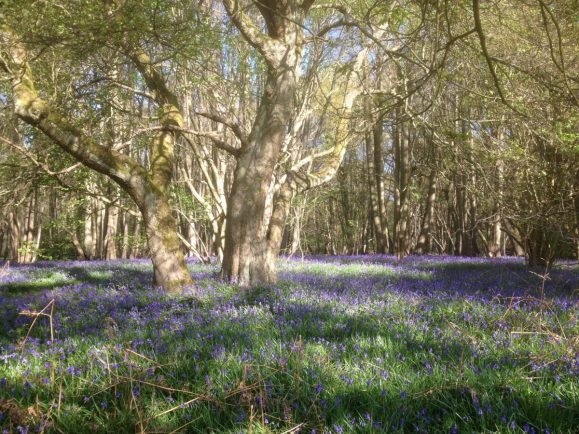RARE wildlife will be destroyed if plans for a Warwickshire nature reserve go ahead.
That is the fear of campaigners angry at Warwickshire Wildlife Trust’s (WWT) proposals for Piles Coppice on the outskirts of Coventry.
A campaign spokesperson said: “Piles Coppice is a tiny remnant of ancient woodland, mentioned in the Doomsday Book. It has remained much the same for centuries and untouched for as long as anyone can remember.
“It is amazingly healthy and surviving against all the odds next to a very busy dual
carriageway.
“It has the best displays of anemones and bluebells in Warwickshire and the birdsong, from a wide range of birds, is incredible. It has been the salvation of local people during the last few months.
“It was taken over by WWT a couple of years ago and they have just published an alarmingly destructive plan of how they intend to “manage” it. A stakeholders’ consultation, which does not seem to include the very people who know and love this wood.”
Conservationists have spent the past 18 months researching the history of the wood and carrying out surveys of its wildlife, some of which has proved extremely rare, including Red Data Book moths and a fungus previously only recorded in Hampshire.
The spokesperson continued: “Yet, in order to extract timber, the Trust are proposing to tear through this wood with big, dirty machinery, destroying ancient trees and the precious peace and habitat of this unique place, contrary to everything they are supposed to stand for.
“Their present campaign is called ‘Let Nature Help’, but instead this plan will destroy natural habitats. The rare birds, moths and bats will disappear, as will the bluebells and other rare plants and fungi.
“Everyone else is saying we must plant trees, to store carbon and protect against climate
change. How much stored carbon will this plan release?
“Current science is saying that outdated woodland management has to change. It is vital to protect canopy to keep out pollution and preserve established microclimates.
“This wood is so special it should be a national treasure, not a source of firewood.
The trust were vehement in their criticism of HS2 destroying Warwickshire
woodland, yet they are about to do the same here.”
But WWT say its plan aims to protect the woodland and its wildlife for future generations.
The trust said it had spent two years of monitoring wildlife and engaging with local groups before drawing up its management plan.
WWT insists reintroducing woodland management will provide long-term protection and resilience to the important woodland, next to its headquarters at Brandon Marsh.
The trust took over Piles Coppice along with neighbouring Brandon Reach.
A WWT spokesperson said: “One motivation to acquire these nature reserves was to deliver part of a new strategy aimed at making Warwickshire’s woodlands better protected for wildlife and people, more resilient to change, and sustainably managed.
“In particular, the recent Covid-19 crisis has highlighted an increased value of green spaces used by local people, so the Trust’s commitment to increasing accessibility to well protected nature sites is closely tied in with this strategy.
“Warwickshire is among the least wooded counties in the UK, which in turn is one of the least wooded countries in Europe. This makes Warwickshire’s woodlands precious and important within the landscape.
“Woodlands have been essential to people for thousands of years, used for timber, fuel and shelter, and more recently for public recreation as well. We know woodlands play an important role in securing carbon, purifying the air we breathe and also helping to prevent flooding.
“WWT advocates for actively managing wildlife habitats for biodiversity and sustainable woodland management can help secure the long term future of woodlands. As demonstrated by science, trees of different ages and varied structures due to cyclical felling, thinning and coppicing will attract a bigger range of wildlife, and will also be more resilient to pests, diseases and climate change. Therefore, one of the biggest threats to our woodlands is the decision not to manage them.”
The spokesperson said parts of Piles Coppice had not seen management since the 1950s and the woodland had almost fully closed over and consisted mainly of deteriorating and even-aged small leaved lime coppice stools and closed-canopy oak high forest.
They continued: “Whilst this type of woodland benefits many common species adapted for such conditions, some of the threatened and rare species that require a varied structure and differing levels of light and micro-climates are in danger of being squeezed out.
“The woodland is also lacking enough canopy gaps and light to encourage the next generation of trees to come through, which would replace the older trees once they reach the end of their natural life expectancy. This is particularly concerning in a woodland made up of mainly similar aged trees, and threatens the long-term stability of the wood.”











